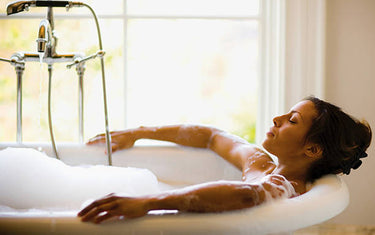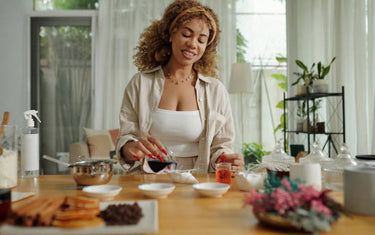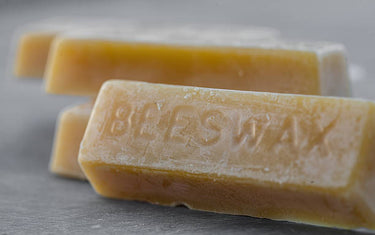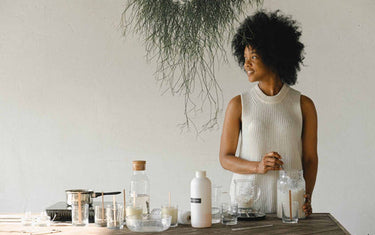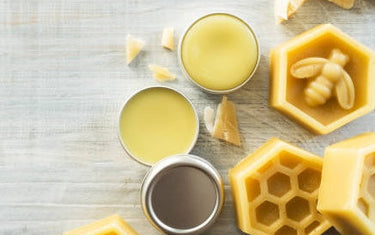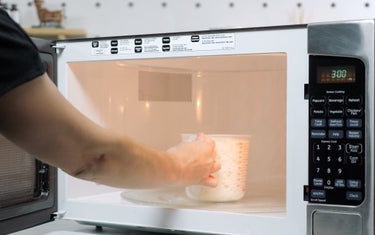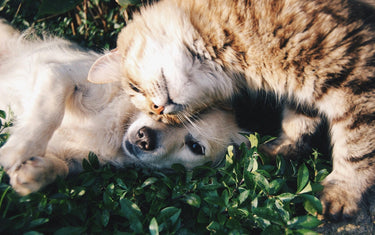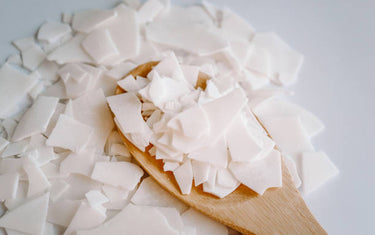5 min read / 28 November 2022 / Laura Garvin Gomez
How to make candles with fragrance oils
Fragrance oils come in an endless array of scent combinations - here's how to use them in your homemade candles.

If you are a fan of essential oils, there is every chance that you’ll also enjoy using fragrance oils in your candles.
While not as natural as essential oils, fragrance oils are specially formulated so you can enjoy the scent of your candles for a longer period of time.
They offer many of the same relaxing and calming sensations associated with essential oils and are also a perfect fit for homemade soaps, wax melts or in oil burners and diffusers.
Here we look at how to make candles with fragrance oils, giving you tips on what to do when making a candle, how to add the fragrance oils themselves, and some ideas on the best types of oils to use.
If you're more interested in making candles with essential oils, you can find our beginner's guide here.

What ingredients do I need to make a candle with fragrance oils?Before getting started on your relaxing candle creations, there are a few tools you'll need to set you on your way. You will need:
|
How to make candles using fragrance oils
Making candles with fragrance oils only requires you to follow a few simple steps, and within a short space of time you’ll have brand new candles to enjoy that have been crafted with your own creativity.
- Put the wax into a heatproof glass bowl and place this over a pan of hot water. Leave it until the wax melts completely. Be sure to take care during this stage as the wax will be very hot.
- Next, take the stabiliser that is attached to the bottom of the wick and glue it to the inside base of the jar. This should make the wick stick out at the top. You can either use a wick holder or balance a skewer or pencil at the top of the mould then wrap the wick around it, which will keep it in a fixed position in the middle of the jar.
- Once the wax has melted, remove it from the heat and let it rest for a minute or two, ensuring it remains in a liquid state.
- You can then add in the fragrance oil of your choice.
- Take the melted wax and carefully pour it into the jar or mould. The amount you need will vary depending on your choice of oil, but generally, we recommend using 30-35 drops of oil for every 160g of wax flakes. For stronger scents you may want to use less. If you’re not sure how much fragrance oil to use in candle making, you can refer to our measuring guide.
- Use a pencil or bamboo stick to support the wick while the wax cools down. The candle may shrink a little in the middle as the wax contracts during the cooling stage. If this happens, you can top it up with some reheated wax, by piercing the half set wax in the jar with a needle and slowly pouring it in. Take care not to pour too much wax inside so it fills beyond the original level of wax.
- It should take around 24 hours for the wax to harden fully, then you can cut the wick to your preferred length.
- Now you can light the candle and enjoy the wonderful aroma in your home.
You should keep in mind that while it’s possible to use pure essential oils to make scented candles, many people prefer to use fragrance oils. Why? Because the pure essential oils evaporate easily when you mix them with hot candle wax, which will affect the quality of your final product.

What are the best fragrance oils for candle making?
Here is a short list of some of the best fragrances for candle making. There are lots more you can try, but many people find these are a great place to start.
- Cosy Fireplace Fine Fragrance Oil: Candles add a sense of warmth and comfort to any room, especially when the lights are dimmed. It’s even better if you have a real log fire at home, although not everyone is so lucky. But you can recreate the distinctive aroma and feeling that comes with a real fire with our Cosy Fireplace Fine Oil. It works especially well on a cold winter’s day after you have locked the outside behind your front door, so you can settle in, snuggle up and rest in comfort.
- Jasmine Fragrance Oil: The popularity of Jasmine Fragrance Oil never seems to wane, with the scent proving to be one of the most enduring around. It has a delicate, inviting aroma that can very quickly make you feel at ease after a long, stressful day. And if you can’t get enough of its gorgeous aroma, it’s adaptable enough to be used in bath salts, potpourri, soap or through diffusion, so you’re never short of options.
- Fresh Linen (Floral) Fragrance Oil: There are some scents that instantly give you that feel good sensation, making you relax no matter where you smell it. Fresh Linen (Floral) Fragrance Oil certainly falls into that category, bringing to mind the warmer days of spring and summer with its beautiful floral essence. It means you no longer need to wait until wash day to soak in the relaxing smell of freshly cleaned clothes and can simply light a candle whenever you feel the urge.
Using wholesale essential oils can also be a cost-effective way to obtain your supplies, so you always have a scent on hand whenever you begin candle making.

Are fine fragrances made for long-lasting scent a better choice?
Given all the effort you’ve made, it makes sense that you’ll want to get the most of your homemade candles, especially when it comes to the aroma.
With that in mind, you may be tempted to use Fine Fragrance Oils that have been specially formulated to produce a longer-lasting aroma.
Finding a fragrance that suits your taste shouldn’t prove difficult given the impressive range of oils on offer, so whether you want to enjoy the scent of a baked cinnamon bun or imagine the mediterranean sunrise you’ll be spoilt for choice.

This should give you all the basics you need to get started with candle making, with an abundance of fragrance oils to test and try out along the way.
You may not get it perfectly right the first time, but with practice you can soon become a candle making master. It’s a great hobby to pick up and it gives you a chance to get creative without having to spend a fortune.
Wholesale Essential Oils
When you’re making candles, consider purchasing wholesale essential oils to save money and ensure a steady supply. This way, you’ll have a cost-effective way to get high-quality essential oils for all your crafting needs, including popular choices like clary sage essential oil.
With bulk buying, you can experiment with a variety of scents and find your favourite combinations for your homemade candles.


